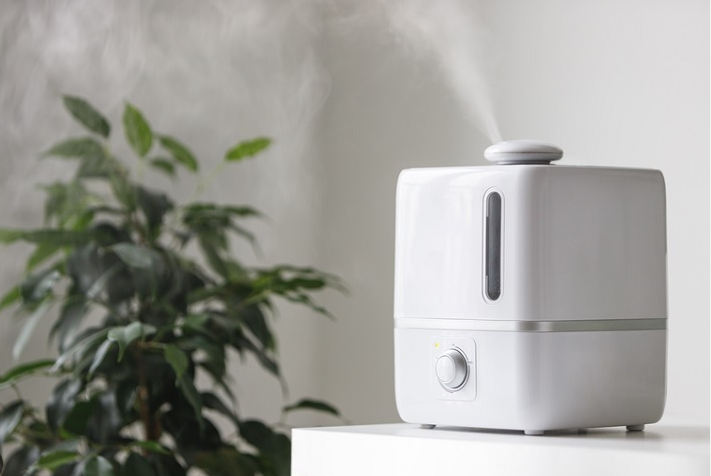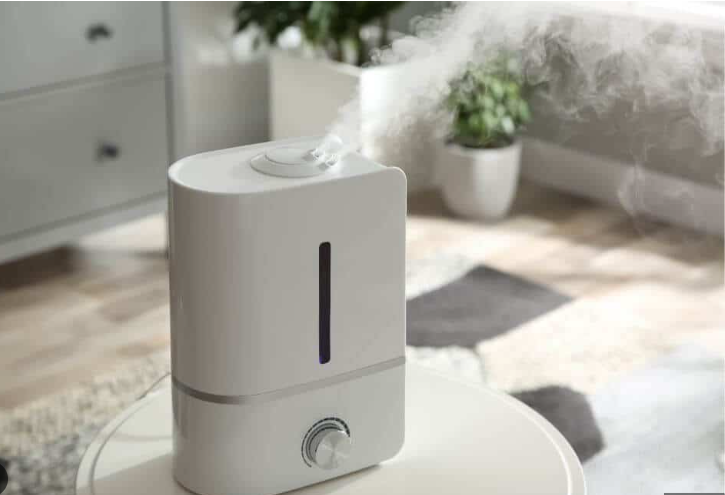Many people wonder, do air purifiers help with allergies? The answer is a resounding yes, but their effectiveness depends on proper usage, maintenance, and choosing the right model. Air purifiers are designed to remove allergens like dust, pollen, pet dander, and mold spores from the air, providing relief for allergy sufferers. In this detailed guide, we’ll explore how air purifiers combat allergies, offer tips on air purifier setup, maintenance, and troubleshooting, and provide practical advice to maximize their benefits. Whether you’re considering a portable air purifier or a larger unit, this article will help you understand how to use an air purifier to alleviate allergy symptoms.
Why Knowing If Air Purifiers Help with Allergies Matters
Allergies can make daily life uncomfortable, causing symptoms like sneezing, itchy eyes, and respiratory issues. Understanding do air purifiers help with allergies is key to creating a healthier indoor environment. Air purifiers work by filtering out airborne allergens, reducing the triggers that cause reactions. Proper air purifier maintenance and usage ensure these devices perform effectively, offering relief for those with seasonal or year-round allergies. By learning how to use an air purifier correctly, you can significantly improve your quality of life.
Let’s dive into how air purifiers tackle allergens, the best practices for using them, and tips to optimize their performance for allergy relief.
How Air Purifiers Help with Allergies
Air purifiers are highly effective at reducing allergens in your home. Here’s how they work to address common allergy triggers:
- HEPA Filters Trap Allergens: High-Efficiency Particulate Air (HEPA) filters are the gold standard for allergy relief. They capture up to 99.97% of particles as small as 0.3 microns, including pollen, dust mites, pet dander, and mold spores.
- Activated Carbon Filters for Odors: While primarily designed for odors and volatile organic compounds (VOCs), activated carbon filters can also reduce irritants that exacerbate allergies, such as smoke or chemical fumes.
- Pre-Filters for Larger Particles: Pre-filters capture larger particles like pet hair, extending the life of HEPA filters and ensuring consistent performance.
- Continuous Air Cleaning: Running an air purifier continuously helps maintain low allergen levels, reducing the likelihood of reactions.
By targeting these allergens, air purifiers can significantly reduce symptoms, making them a valuable tool for allergy sufferers. For more details on choosing the right model, check out our clean air guide.
Do Air Purifiers Help with Specific Allergies?
Not all allergies are the same, and air purifiers are particularly effective for certain types. Here’s how they address common allergy triggers:
- Pollen Allergies: HEPA filters excel at capturing pollen particles, which are common during spring, summer, and fall. Keeping windows closed and running the purifier helps prevent outdoor pollen from settling indoors.
- Dust Mite Allergies: Dust mites thrive in bedding, carpets, and upholstery. Air purifiers reduce airborne dust mite allergens, especially when used in bedrooms.
- Pet Allergies: Pet dander is a common allergen, and HEPA filters can trap these tiny particles. Regular air purifier cleaning ensures the device continues to handle pet-related allergens effectively.
- Mold Allergies: Mold spores can trigger severe reactions. HEPA filters capture these spores, while maintaining proper humidity levels in your home complements the purifier’s effectiveness.
While air purifiers are highly effective for airborne allergens, they may be less effective for non-airborne triggers like food allergies or contact-based irritants.

How to Use an Air Purifier for Allergy Relief
To maximize the benefits of an air purifier for allergies, follow these air purifier tips for proper usage and setup:
Choose the Right Location
Proper air purifier setup is critical for allergy relief. Place the purifier in the room where you spend the most time, such as your bedroom or living room. Ensure it’s in an open area with unobstructed airflow, away from walls or furniture. A portable air purifier is ideal for moving between rooms as needed.
Run Continuously
For optimal allergy relief, run your air purifier 24/7, especially during high-pollen seasons or in homes with pets. Use auto mode or medium fan speeds to balance efficiency and noise levels. Continuous operation ensures allergens are consistently removed from the air.
Keep Windows and Doors Closed
To prevent outdoor allergens like pollen from entering, keep windows and doors closed while the purifier is running. This allows the device to focus on cleaning indoor air.
Use the Right Filter
Ensure your air purifier has a true HEPA filter for maximum allergen capture. Check the specifications when purchasing, as some filters labeled “HEPA-like” may not meet the same standards.
Air Purifier Maintenance for Allergy Relief
Regular air purifier maintenance is essential to ensure your device continues to help with allergies. Here’s how to keep it in top shape:
- Replace Filters on Schedule: HEPA filters typically last 6–12 months, while activated carbon filters may need replacement every 3–6 months. Check your manual for specific timelines and replace filters promptly to maintain allergen removal efficiency.
- Clean Pre-Filters: Wash or vacuum pre-filters every 1–2 months to prevent clogging and extend the life of the main filter.
- Wipe Down the Unit: Dust can accumulate on the purifier’s exterior, so clean it with a damp cloth every 2–3 weeks to prevent reintroducing allergens.
- Check for Blockages: Ensure air vents are free from obstructions to maintain optimal airflow.
For detailed maintenance tips, visit our filter maintenance tips page.
Air Purifier Troubleshooting: Addressing Allergy-Related Issues
If your air purifier isn’t providing the allergy relief you expect, try these air purifier troubleshooting steps:
- Poor Allergen Removal: If allergy symptoms persist, check if the filter is clogged or overdue for replacement. Ensure the purifier is sized appropriately for the room.
- Weak Airflow: Clogged filters or blocked vents may reduce performance. Clean or replace filters and reposition the unit for better airflow.
- Unusual Odors: A saturated activated carbon filter may release odors. Replace it and clean the unit thoroughly.
- Noisy Operation: Excessive noise could indicate a clogged filter or loose component. Inspect and address the issue promptly.
Addressing these issues ensures your air purifier continues to help with allergies effectively.
How to Clean with an Air Purifier for Allergy Relief
Cleaning your home can stir up allergens, but using an air purifier strategically can help. Here’s how to clean with an air purifier to minimize allergy triggers:
- Run During Cleaning: Turn on the purifier at a higher fan speed while vacuuming, dusting, or sweeping to capture airborne allergens.
- Position Strategically: Place the purifier near the cleaning area but out of the way to avoid direct debris exposure.
- Clean Filters Post-Cleaning: After heavy cleaning, check and clean pre-filters to prevent clogging.
These practices reduce allergen levels and enhance the purifier’s effectiveness for allergy relief.

Choosing the Best Air Purifier for Allergies
Not all air purifiers are equally effective for allergies. According to the best air purifier guide, consider these features when selecting a model:
- True HEPA Filter: Ensure the purifier has a true HEPA filter for capturing allergens like pollen, dust mites, and pet dander.
- Room Size Compatibility: Choose a purifier with a Clean Air Delivery Rate (CADR) suited for your room’s square footage.
- Quiet Operation: For bedroom use, opt for a model with low noise levels to avoid disrupting sleep.
- Portable Air Purifiers: Compact models are ideal for targeting specific rooms, making them versatile for allergy sufferers.
Selecting the right purifier ensures you get the most relief from allergy symptoms. For recommendations, explore our resources at airpurifierr.com.
Air Purifier Safety for Allergy Sufferers
Using an air purifier safely is important, especially for those with allergies. Follow these air purifier safety tips:
- Unplug Before Maintenance: Always unplug the unit before changing filters or cleaning to avoid electrical hazards.
- Handle Filters Carefully: Wear gloves when replacing filters to avoid contact with trapped allergens.
- Keep Away from Moisture: Place the purifier in a dry area to prevent mold growth, which can worsen allergies.
Conclusion: Do Air Purifiers Help with Allergies?
The answer to do air purifiers help with allergies is a clear yes when used correctly. With the right air purifier setup, regular air purifier maintenance, and strategic usage, air purifiers can significantly reduce allergens like pollen, dust mites, pet dander, and mold spores. By following air purifier tips and addressing issues through air purifier troubleshooting, you can ensure your device provides consistent allergy relief.
Whether you’re using a portable air purifier or a larger model, proper care and selection are key to maximizing benefits. For more expert advice on choosing and maintaining an air purifier for allergies, visit airpurifierr.com. Start breathing easier and enjoy a healthier, allergy-free home today!